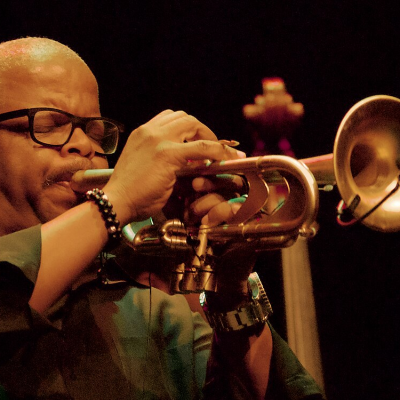The correct answer is:
Jimmy Rushing
He was no Mr. Five-by-five in those days, but a compact, debonair young man who dressed with an easy elegance. Much later, during theater appearances with Basie’s famous band, he sometimes cut an old step from slavery days called “falling off the log” for the sheer humor provided by the rapid and apparently precarious shifting of his great bulk, but in the Oklahoma days he was capable of an amazing grace of movement. A nineteenth-century formality still clung to public dances at the time, and there was quite a variety of steps. Jimmy danced them all, gliding before the crowd over the polished floor, sometimes with a girl, sometimes with a huge megaphone held chest-high before him as he swayed. The evenings began with the more formal steps, to popular and semi-classical music, and proceeded to become more expressive as the spirit of jazz and the blues became dominant. It was when Jimmy’s voice began to soar with the spirit of the blues that the dancers — and the musicians — achieved that feeling of communion which was the true meaning of the public jazz dance. The blues, the singer, the band and the dancers formed the vital whole of jazz as an institutional form, and even today neither part is quite complete without the rest. The thinness of much of so-called “modern jazz” is especially reflective of this loss of wholeness, and it is quite possible that Rushing retains his vitality simply because he has kept close to the small Negro public dance.
– Ralph Ellison, from “Remembering Jimmy.” Originally appeared in the Saturday Review, July 12, 1958
*
Rushing sings “Good Morning Blues,” from 1962


































